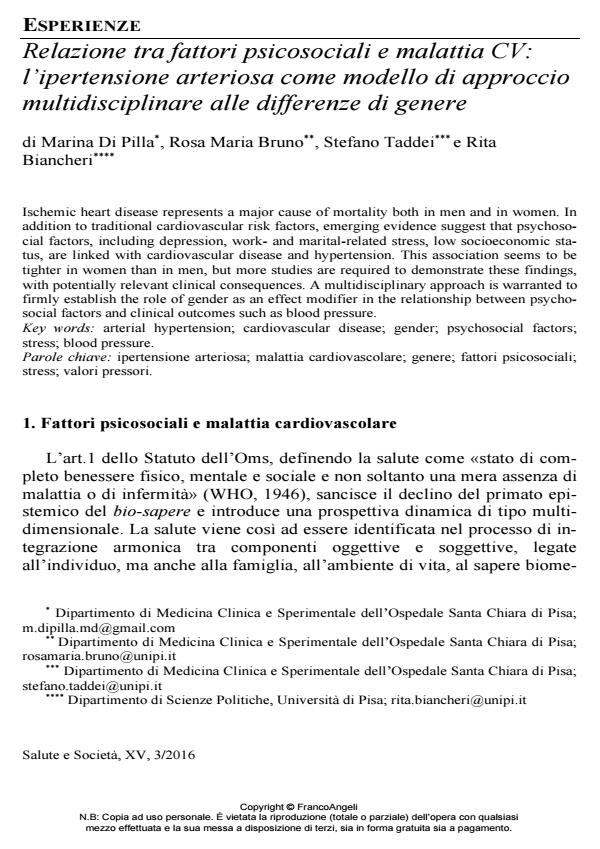Relazione tra fattori psicosociali e malattia CV: l’ipertensione arteriosa come modello di approccio multidisciplinare alle differenze di genere
Journal title SALUTE E SOCIETÀ
Author/s Marina Di Pilla, Rosa Maria Bruno, Stefano Taddei, Rita Biancheri
Publishing Year 2016 Issue 2016/3
Language Italian Pages 9 P. 103-111 File size 46 KB
DOI 10.3280/SES2016-003008
DOI is like a bar code for intellectual property: to have more infomation
click here
Below, you can see the article first page
If you want to buy this article in PDF format, you can do it, following the instructions to buy download credits

FrancoAngeli is member of Publishers International Linking Association, Inc (PILA), a not-for-profit association which run the CrossRef service enabling links to and from online scholarly content.
Ischemic heart disease represents a major cause of mortality both in men and in women. In addition to traditional cardiovascular risk factors, emerging evidence suggest that psychosocial factors, including depression, work- and marital-related stress, low socioeconomic status, are linked with cardiovascular disease and hypertension. This association seems to be tighter in women than in men, but more studies are required to demonstrate these findings, with potentially relevant clinical consequences. A multidisciplinary approach is warranted to firmly establish the role of gender as an effect modifier in the relationship between psychosocial factors and clinical outcomes such as blood pressure.
Keywords: Arterial hypertension; cardiovascular disease; gender; psychosocial factors; stress; blood pressure.
Marina Di Pilla, Rosa Maria Bruno, Stefano Taddei, Rita Biancheri, Relazione tra fattori psicosociali e malattia CV: l’ipertensione arteriosa come modello di approccio multidisciplinare alle differenze di genere in "SALUTE E SOCIETÀ" 3/2016, pp 103-111, DOI: 10.3280/SES2016-003008